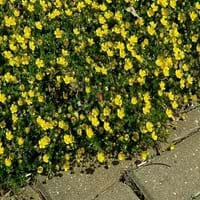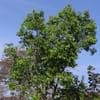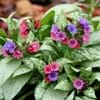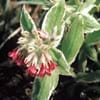Life Span
Biennial
Perennial
Origin
Not Available
Eastern Asia, Japan
Types
Abbotswood potentilla, Daydawn potentilla, Klondike potentilla
Not Available
Habitat
Clay soil areas, Rocky areas, Wet ground
Old fields, stream banks
USDA Hardiness Zone
3-8
4-8
Sunset Zone
A1, A2, A3, H1, H2, 1a, 1b, 2a, 2b, 3a, 3b, 4, 5, 6, 7, 8, 9, 10, 11, 12, 13, 14, 15, 16, 17, 18, 19, 20, 21, 22, 23, 24
A3, 2b, 3a, 3b, 4, 5, 6, 7, 8, 9, 10, 11, 12, 13, 14, 15, 16, 17, 18, 19, 20, 21, 22, 23, 24
Habit
Not Available
Oval or Rounded
Flower Color
Orange, Yellow
Yellow, Yellow green
Flower Color Modifier
Not Available
Not Available
Fruit Color
Not Available
Red orange
Leaf Color in Spring
Green, Light Green
Light Green
Leaf Color in Summer
Not Available
Green
Leaf Color in Fall
Not Available
Purple, Orange, Burgundy, Crimson
Leaf Color in Winter
Light Green
Not Available
Leaf Shape
Small elliptic
Obovate
Plant Season
Early Fall, Spring
Spring, Summer, Fall, Winter
Sunlight
Full Sun, Partial shade, Partial Sun
Full Sun, Partial Sun
Growth Rate
Not Available
Medium
Type of Soil
Well drained
Clay, Loam, Sand
The pH of Soil
Slightly Alkaline
Acidic, Neutral, Alkaline
Soil Drainage
Not Available
Average
Bloom Time
Late Summer, Summer
Spring, Late Spring
Repeat Bloomer
Not Available
No
Tolerances
Drought
Pollution, Drought, Salt, Soil Compaction
Where to Plant?
Ground
Ground, Pot
How to Plant?
Stem Planting
Seedlings
Plant Maintenance
Low
Medium
Watering Requirements
Average Water Needs, Needs watering once a week, Water less during winter, Water more in summer, Water when soil is dry
Requires regular watering during dry weather
In Summer
Lots of watering
Lots of watering
In Spring
Moderate
Moderate
In Winter
Average Water
Average Water
Soil pH
Not Available
Acidic, Neutral, Alkaline
Soil Type
Not Available
Clay, Loam, Sand
Soil Drainage Capacity
Not Available
Average
Sun Exposure
Full Sun, Partial Sun
Full Sun, Partial Sun
Pruning
Prune if you want to improve plant shape, Prune in early spring, Remove damaged leaves, Remove dead branches, Remove dead leaves
Remove damaged leaves, Remove dead branches, Remove dead leaves
Fertilizers
Apply 10-10-10 amount
All-Purpose Liquid Fertilizer
Pests and Diseases
Red blotch
Red blotch, Sunken patches
Plant Tolerance
Drought
Drought
Flowers
Yes
Insignificant
Flower Petal Number
Not Available
Single
Showy Fruit
Not Available
Yes
Edible Fruit
Not Available
No
Fragrant Flower
Not Available
No
Fragrant Fruit
Not Available
No
Fragrant Leaf
Not Available
No
Fragrant Bark/Stem
Not Available
No
Showy Foliage
Not Available
Yes
Showy Bark
Not Available
No
Foliage Texture
Not Available
Medium
Foliage Sheen
Not Available
Matte
Invasive
Not Available
Sometimes
Self-Sowing
Not Available
Yes
Attracts
Bees, Butterflies
Birds
Allergy
Avoid during Pregnancy
Not Available
Aesthetic Uses
Showy Purposes, Used for decorating walls, fences, gates, hedges, etc.
Borders
Beauty Benefits
Good for skin, Skin cleanser, Skin Problems
Not Available
Edible Uses
Insignificant
Yes
Environmental Uses
Air purification, Prevent Soil Erosion, Provides ground cover, soil erosion prevension on hill slopes
Air purification
Medicinal Uses
Antibiotic, Astringent, Diarrhea, Haemostatic, Hypoglycaemic, Mildly painful menstruation, Odontalgic, Premenstrual syndrome, Swelling
Anthelmintic, Antibacterial, Antiseptic, Cancer
Part of Plant Used
Flowers, Root
Fruits, Leaves
Other Uses
Cosmetics, Showy Purposes, Used as a dye
Used to make yellow dye
Used As Indoor Plant
Insignificant
No
Used As Outdoor Plant
Yes
Yes
Garden Design
Not Available
Edging, Foundation, Hedges, Mixed Border, Rock Garden, Wall
Botanical Name
POTENTILLA
BERBERIS thunbergii
Common Name
Potentilla
Japanese Barberry
In Hindi
Potentilla plant
Japanese Barberry
In German
Potentilla Pflanze
Thunberg-Berberitze
In French
plante Potentilla
Berberis thunbergii
In Spanish
planta Potentilla
Berberis thunbergii
In Greek
φυτό potentilla
Japanese Barberry
In Portuguese
planta Potentilla
Japanese Barberry
In Polish
Potentilla roślin
Berberys Thunberga
In Latin
Potentilla herba
Japanese Barberry
Phylum
Vascular plant
Magnoliophyta
Class
Magnoliopsida
Magnoliopsida
Order
Rosales
Ranunculales
Family
Rosaceae
Berberidaceae
Genus
Potentilla
Berberis
Clade
Angiosperms, Eudicots, Rosids
Angiosperms, Eudicots
Tribe
Not Available
Not Available
Subfamily
Rosoideae
Not Available
Number of Species
Not Available
Importance of Potentilla and Japanese Barberry
Want to have the most appropriate plant for your garden? You might want to know the importance of Potentilla and Japanese Barberry. Basically, these two plants vary in many aspects. Compare Potentilla and Japanese Barberry as they differ in many characteristics such as their life, care, benefits, facts, etc. Every gardener must at least have the slightest clue about the plants he wants to plant in his garden. Compare their benefits, which differ in many ways like facts and uses. The medicinal use of Potentilla is Antibiotic, Astringent, Diarrhea, Haemostatic, Hypoglycaemic, Mildly painful menstruation, Odontalgic, Premenstrual syndrome and Swelling whereas of Japanese Barberry is Anthelmintic, Antibacterial, Antiseptic and Cancer. Potentilla has beauty benefits as follows: Good for skin, Skin cleanser and Skin Problems while Japanese Barberry has beauty benefits as follows: Good for skin, Skin cleanser and Skin Problems.
Compare Facts of Potentilla vs Japanese Barberry
How to choose the best garden plant for your garden depending upon its facts? Here garden plant comparison will help you to solve this query. Compare the facts of Potentilla vs Japanese Barberry and know which one to choose. As garden plants have benefits and other uses, allergy is also a major drawback of plants for some people. Allergic reactions of Potentilla are Avoid during Pregnancy whereas of Japanese Barberry have Not Available respectively. Having a fruit bearing plant in your garden can be a plus point of your garden. Potentilla has no showy fruits and Japanese Barberry has showy fruits. Also Potentilla is flowering and Japanese Barberry is not flowering . You can compare Potentilla and Japanese Barberry facts and facts of other plants too.





